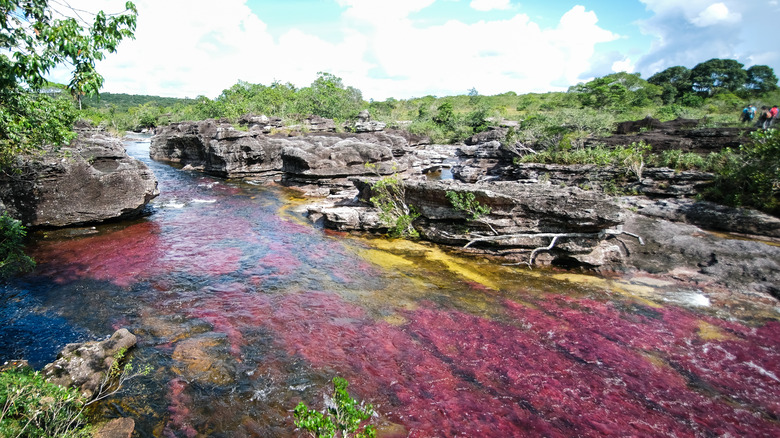The Stunning Truth About Colombia's River Of Five Colors
South America has been a source of mystery for centuries within the fields of biology and archaeology. The titanic Amazon rainforest holds within it all sorts of natural wonders in the way of plant and animal life. It also holds the remains of mysterious settlements that long predate the rise of the Incan empire — which was once thought to be the pinnacle of South American civilization. Meanwhile in Colombia, a river stands out as one of the most visually unique ecosystems in the world.
Caño Cristales, also known as the "River of Five Colors" and the "Liquid Rainbow," is a 62-mile-long body of water which can appear as any mix of colors including yellow, blue, green, orange, and a purplish red (via Travel + Leisure). While multiple colors appearing at once is a relatively rare occurrence, the river is nevertheless a spectacular sight whenever it bears any color. Although at first it may appear as though artificial dye was added to the water, this rainbow river is a completely natural phenomenon.
The river's defining colors are due to one plant
Caño Cristales' various colors are the result of Macarenia clavigera, a rare species of aquatic plant that spans the length of the river (via Gentside). The plants change color depending on how much sunlight they receive, which is determined by the height and speed of the water. It is therefore not uncommon for the plants to be completely colorless if sunlight is too inaccessible. Macarenia Clavigera is also an exceptionally delicate plant; its transparent leaves give the water an almost painted appearance (via the BBC).
This makes them easily damaged by major disturbances in the water and, unfortunately, human visitors initially tended to trample them while swimming. Once a tourist industry was established around the site, regulations were put in place that cut down the number of visitors, prohibited any chemicals such as bug spray, and limited how many people could swim at one time. Regardless, The River of Five Colors stands out as one of Colombia's most popular natural attractions, drawing thousands of tourists every year (via CNN).

